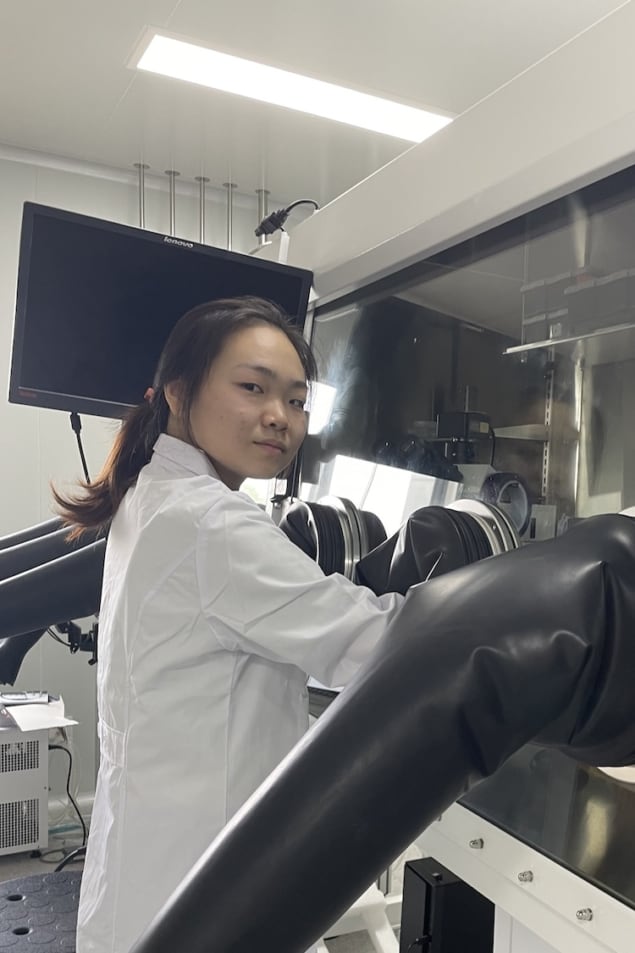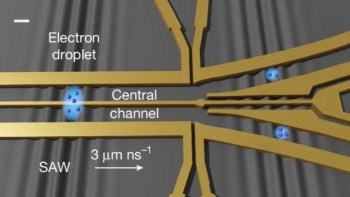
A newly fabricated two-dimensional material with the chemical formula Mn2Ga2S5 could find use in spintronics applications thanks to a phenomenon known as spin frustration. The material could also be used to study the fundamental physics of 2D magnetism and spin-disordered states, say the researchers at the Chinese Academy of Sciences in Hefei who fabricated it.
Spin frustration is a hot topic in magnetism research, explains Zhe Qu, a physicist at the Hefei Institutes of Physical Science’s High Magnetic Field Laboratory and the leader of the team that created the material. In frustrated magnetic systems, individual particles cannot arrange their magnetic moments (or spins) into a regular and stable pattern. This behaviour contrasts with that of ordinary ferromagnets, in which all the spins point in the same direction, and antiferromagnets, in which the spins point in alternating directions. Such frustration can lead to many novel phenomena by suppressing conventional magnetic orders, including highly degenerate ground states, strong fluctuations, cooperative paramagnetism and spin-disordered states at low temperatures.
Researchers have discovered a myriad of 3D spin-frustrated materials, most of which have their atoms arranged in three-dimensional triangular, face-centred cubic, hexagonal close-packed or kagome lattices. Until now, however, only a few spin-frustrated 2D materials had been found.
No long-range order
Qu and colleagues synthesized their single-crystalline Mn2Ga2S5 using a common method known as chemical vapour transport (CVT). This method involved mixing the manganese, gallium and sulphur in the correct stoichiometric molar ratio of 2:2:5 and putting them into a quartz ampoule using iodine as the transport agent. They then vacuum-sealed the ampoule and placed it in a tube furnace containing two temperature zones with a gradient of 1050–950 °C between them. After seven days, they allowed the sample to cool down to room temperature. The result was a large quantity of soft, dark brown single crystals that are easily sliced into 2D layers held together by weak van der Waals forces.

3D quantum spin liquid discovery gains theoretical support
When the researchers subsequently cooled the material down to 2K, they did not observe any long-range order developing. Instead, they found that the spins “freeze” at a temperature of around 12 K. This effect stems from the competition between exchange interactions (which are responsible for the emergence of ferromagnetism) and the material’s 2D crystalline structure. The result is a “frustration index” of around 22, indicating that the system is highly frustrated. The researchers explain that the spin frustration within the crystals comes from the buckled Mn2+ honeycomb lattice within the van der Waals layer.
The researchers, who detail their work in Chinese Physics B, say they are now planning to search for frustrated 2D magnetism in related materials.



